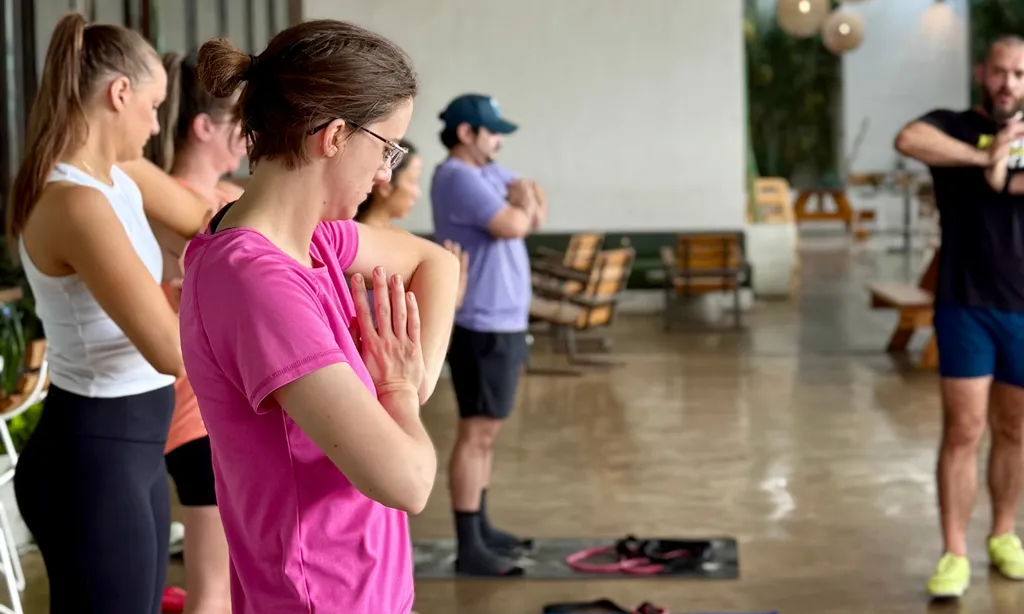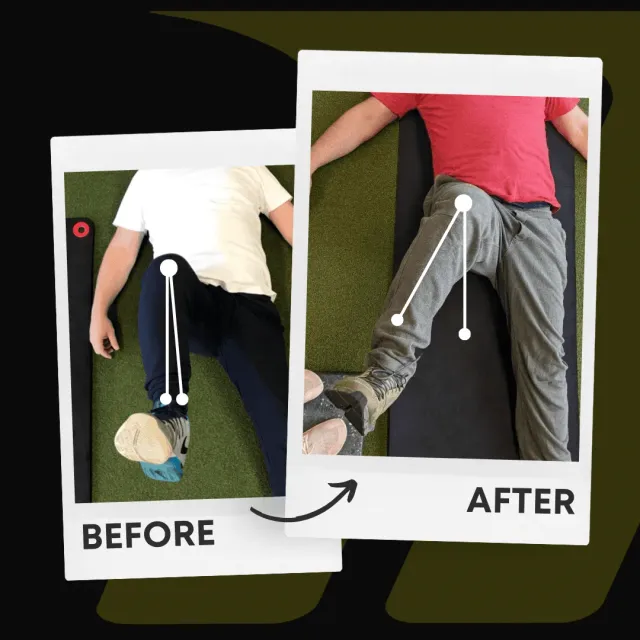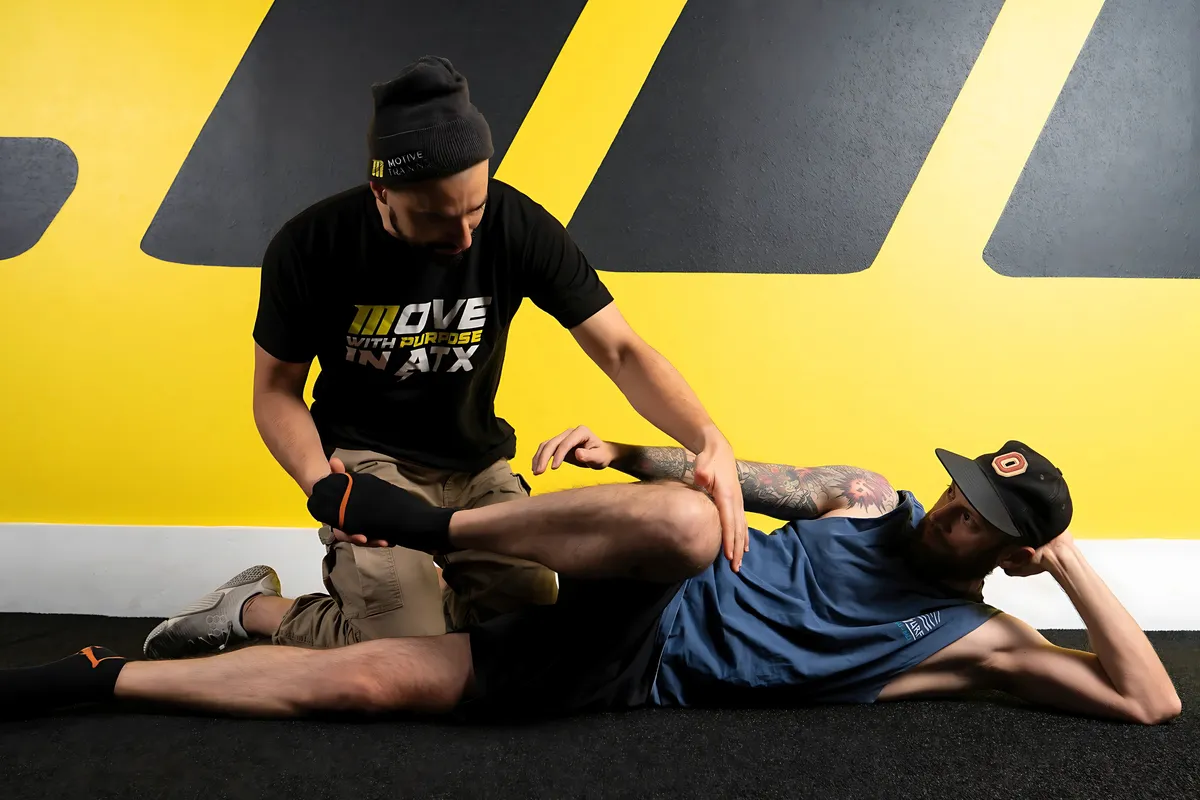What Is Functional Range Conditioning: An Intro
December 10, 2021 | Functional Range Conditioning

Motive Training has grown significantly over the last 18 months. We have always been a movement-focused gym. However, we recently kicked things up a notch by intertwining Functional Range Conditioning (FRC®) into our programming.
FRC is a joint health and mobility system that assesses, improves, and sustains joint strength, integrity, and resilience. Its goal is to make you a more complete, mobile human being, which is why it’s so easy to support FRC’s mission and use its protocols. FRC aims to convert ranges of motion that are only under passive control into usable, functional, active ranges of motion.
Our industry generally tries to work around joint issues, not through them. Functional Range Conditioning turns that on its head and empowers people like you to take control of your joint health to move your joints better interdependently. So, for example, if you struggle to move your shoulder overhead without pain or compensation, perhaps you should improve your shoulder’s ability to move overhead rather than pretend it’s not an issue, to begin with. FRC also aims to improve joint control through targeted exercises, giving you the power to enhance your mobility.
We come in to help you improve your shoulder through the FRC system. Mobility training helps minimize the risk of injury and keeps individuals moving healthier and longer.
Determining Joint Health: You Don’t Need to Be a Physical Therapist.
Contrary to popular belief, trainers are well within their scope to assess how well other human beings move their bodies. We’re not taught to be movement detectives, but we should be. The only way to truly understand how well someone moves is to get hands-on with them, which is precisely what we do.
At Motive Training, we use the Functional Range Assessment (FRA®) to assess your movement on a joint-by-joint basis. We explore every joint from the neck to the toes.
We look at how you can or cannot move certain joints to tell us where to begin training. For instance, if you are flexible (i.e., you have an excellent capacity to move your joints) but not mobile (i.e., you cannot control where your oints move), we know what to work on first and how.
FRC principles such as controlled articular rotations, progressive and regressive angular isometric loading, and mobility training work to teach the central nervous system to control and function in newly acquired ranges, ultimately inducing more control and expanding the available range of motion at any given joint. FRC also trains the nervous system to control the body’s ranges of motion, improving mobility, strength, and resilience in the newly acquired ranges. This means that FRC is not just about physical training, but also about training your nervous system to better control your body’s movements.
If someone comes in with pain that we can’t work with, we refer them to a clinic that can effectively diagnose and treat them within the FRC system.
Assessments Guide Programming, Always.
We utilize our FRA findings to begin training, teaching you how to improve global joint range of motion and increase joint mobility to do what you want (e.g., play with your kids, lift heavier weights, etc.)
Regardless of our findings, we teach everyone to perform controlled articular rotations (CARs).
Mobility refers to the amount of usable movement across a joint under the control of the central and peripheral nervous systems. Training mobility involves converting passive ranges of motion into active and usable ranges through neurological control.
Controlled Articular Rotations (CARs)
CARs are joint circles that allow you to explore a given joint’s workspace slowly, methodically, and intentionally.
Standard shoulder exercises (e.g., push-ups) generally work the shoulder joint in a fixed plane. In contrast, CARs examine and load the entire shoulder joint through its biggest range of motion possible, strengthening and enhancing neurological control of connective tissues.
Your body feeds off of input. So, the more consistent information we give it, the more likely it is to maintain its available range of motion, strength, and resilience. That’s what makes CARs a powerful tool in supporting joint health. CARs also help develop strength and resilience in newly acquired ranges to prevent injury.
CARs are universal and applicable to everyone, regardless of their starting point. We use them to assess joint function, warm up tissue, train range of motion, or cool down; they’re beneficial no matter how they’re used. CARs help to maintain and improve joint health, increase joint mobility, and reduce the risk of injury. They’re a simple yet powerful tool that can be used in a variety of ways to support your overall fitness and wellness.
Below is a video that explains how and why to perform the ‘core’ CARs: neck, spine, shoulders, and hips. Of course, all joint CARs are essential, and these four CARs are a great starting point for everyone, regardless of their starting point. We use them to assess joint function, warm up tissue, train range of motion, or cool down; they’re beneficial no matter how they’re used, making FRC a system that caters to all.
Functional Range Conditioning: Reinventing What It Means To Train
We don’t disregard standard training modalities. For example, we can teach you to perform barbell back squats, kettlebell swings, and weighted chin-ups if your goals and body require them. However, we don’t start you there unless your joints and body have the prerequisites to do so. Instead, we might start with a series of controlled articular rotations (CARs) to assess your joint function and warm up your tissues, followed by some mobility training to improve your range of motion, and then progress to more complex exercises as your body becomes more capable.
That is what good personal training should be about, and that’s why we’ve adopted FRC into our programming. Functional movements are essential for optimal wellness; everyone can benefit from utilizing their body to its fullest potential.
Improving the health and function of the joint capsule reduces the risk of injury and premature degeneration. Conditioning the joint capsule’s tissues to be strong and robust is crucial for healthy movements.
Distinguishing where to start training and why it is crucial to your progress and longevity in and out of the gym.
Functional Range Conditioning allows us to take training one step further to make you the most functional human being you can be. And that is a goal practically everyone can get behind. With FRC, you’re not just improving your current mobility and joint health, you’re investing in a healthier, more functional future.
Don’t leave results on the table or hinder your body’s ability to move and function at the highest level. Instead, reach out to us, and we’ll show you how to implement exercises like CARs to drastically improve your body from your head down to your toes.
Written by
Brian Murray, FRA, FRSC
Founder of Motive Training
We’ll teach you how to move with purpose so you can lead a healthy, strong, and pain-free life. Our headquarters are in Austin, TX, but you can work with us online by signing up for KINSTRETCH Online or digging deep into one of our Motive Mobility Blueprints.

